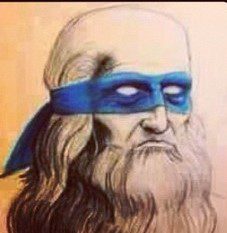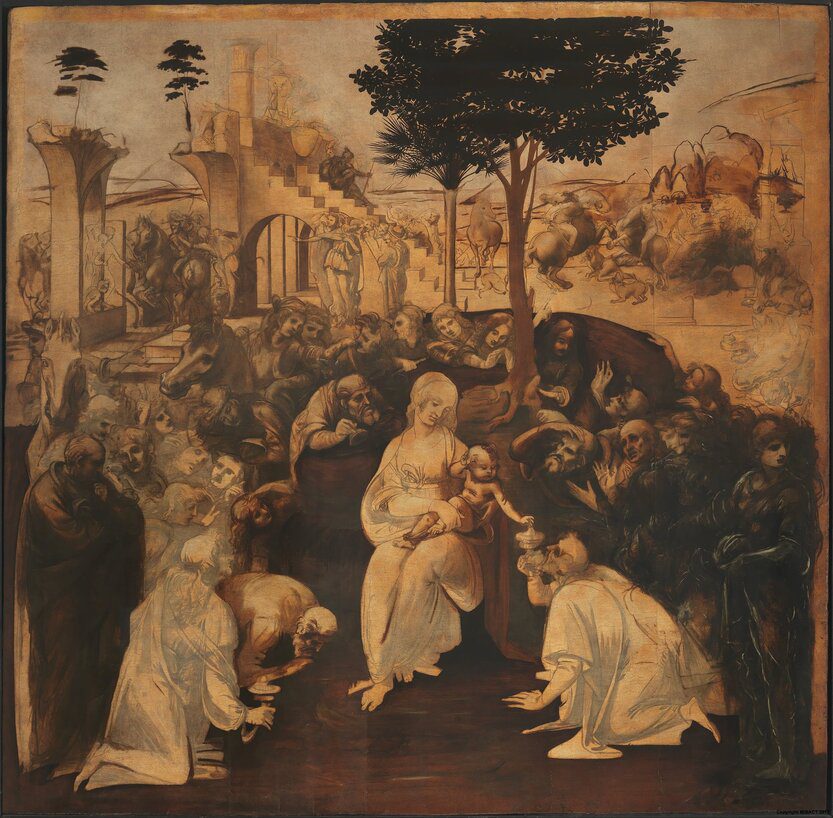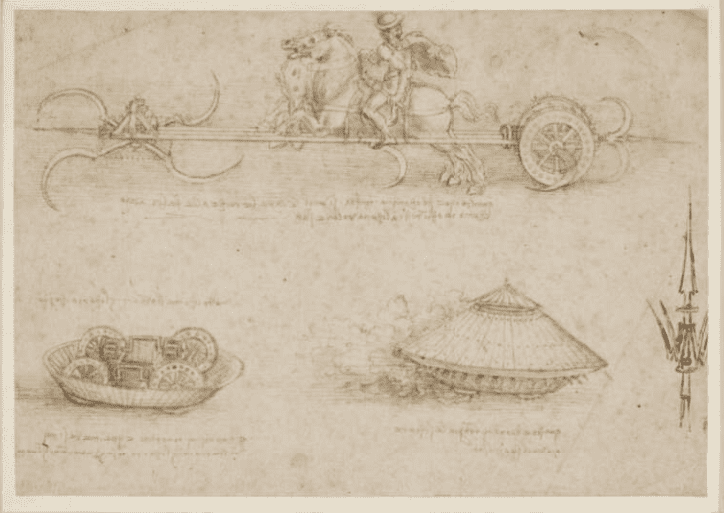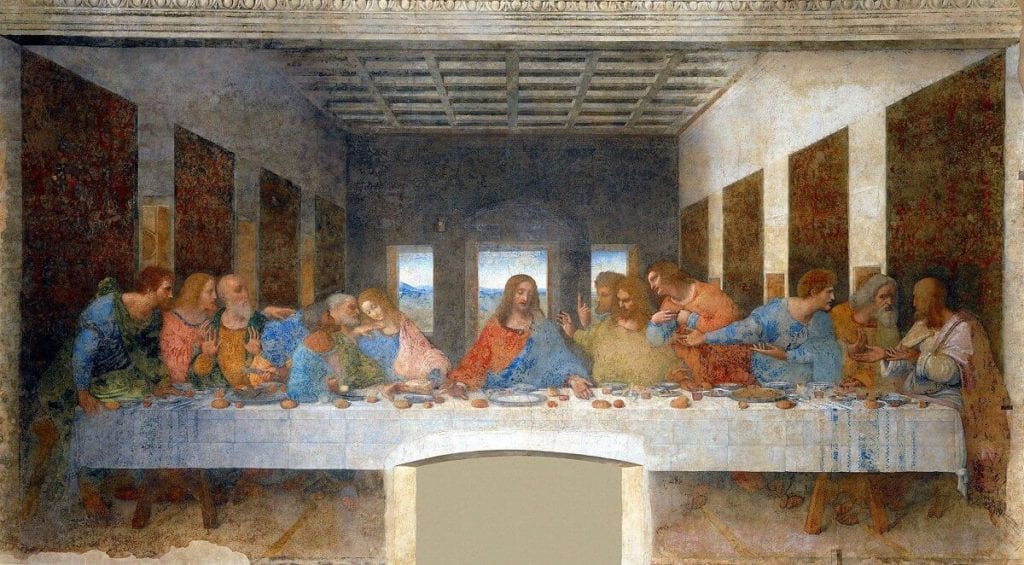The Lives of the Real Ninja Turtles

Leonardo: Perhaps the Most Innovative of the Renaissance Masters
In the third of our blogs looking at the lives of the real Ninja Turtles, we look at the life of artist and genius polymath Leonardo Da Vinci. Like his Ninja Turtle compatriot, he led the group of Renaissance Masters by example. Leonardo can be considered the true Renaissance Man and universal genius who spent his life on a quest for knowledge. Strangely enough, we think of Leonardo as one of the most accomplished men of his time. He was often frustrated in life. He was known for frequently giving up or having to abandon many of his projects. Here we will have a look at the life, works, and adventures of this often misunderstood genius.
Leonardo was born Leonardo di ser Piero da Vinci in the Tuscan hill town of Vinci near Florence, on the 15th of April 1452. He was the illegitimate son of a rich Florentine notary called Piero Fruosino di Antonio da Vinci and a peasant woman named Catarina. Having illegitimate children was quite common at the time and so, while Leonardo spent his first years in the home of his mother, by the age of 5 he moved in with his father and grandparents in the small town of Vinci. Leonardo’s father went on to marry four wives giving Leonardo a total of 12 half-siblings, many of whom were much younger than him. Perhaps it was because he left her at such a young age, but Leonardo was never close to his mother. Writing to her rarely, he remained much closer to his father. Strangely enough, Leonardo’s illegitimate status may have been lucky for him, it meant he didn’t have to follow the family business and become a notary. Instead, he managed to branch out and follow his passion for the Arts.
Leonardo received no formal schooling, but he would have received some level of informal education at home. He was a continually curious and incredibly talented child who would often spend his days marvelling at nature. One biography of his tells the story of a peasant asking Leonardo’s father to have a shield painted for him. He gave it to his son and Leonardo drew a monster so terrifying and so impressive that his father sold the shield to the Duke of Milan and bought a replacement to give to the peasant.

Getting His Start in Florence
In the 1460s, Leonardo’s family moved to Florence and at only 14 years old he became a studio boy in the workshop of Andrea del Verrocchio. It is difficult to imagine a more perfect place for his young mind to develop. Florence was at the forefront of culture and artistry, and Verrocchio was the most celebrated artist of his day. He had been a student of Donatello’s and his workshop became a hotspot where some of the most prominent artists of the time would meet.
Leonardo was able to exchange ideas with and learn from pre Renaissance masters like Ghirlandaio, Perugino, and Botticelli while wandering around Florence studying works that surrounded him by Donatello and Masaccio. The young artist strived to learn as much as he could, studying every form of art available to him. He particularly enjoyed painting. Legend has it that while Leonardo was helping Verrocchio on his painting The Baptism of Christ, Leonardo painted an angel that was so striking Verrocchio snapped his brush and swore never to paint again because he knew he would never paint anything that beautiful. Though the story is likely untrue, it does give us some indication of how highly the young artist was considered.
By the age of 20, Leonardo had become a master artist in the Guild of Saint Luke and his father opened a workshop for him in Florence. While he continued to work with Verrocchio, he did receive independent commissions. He started several pieces (most notably his The Adoration of the Magi) but these would be the first of many unfinished works by Leonardo. Leonardo was said to be a popular man living comfortably, but his life took a drastic turn in 1476 when he was arrested.
Unfortunately, 15th century Florence wasn’t as open-minded as we are today and homosexuality was still a crime punishable by death. At 24 years old Leonardo, with some friends, was arrested on charges of sodomy. Luckily he was to spend very little time in jail and the charges were eventually dropped, probably due in some part to the influence of the Medici family. Not long afterward Leonardo decided he had enough of Florence and moved to Milan to enter the service of the Duke of Milan, Ludovico Sforza.

Engineering Designs in Milan
When applying for patronage in Milan, Leonardo highlighted the vast improvements he could do in weapons design and engineering, and barely mentioned the fact that he could paint. It is here that we start to see an image of Leonardo as one of the true Renaissance masters. A sculptor, engineer, inventor, and painter all rolled into one. He helped Ludovico by designing bridges, domes, and floats for the city. He also designed great machines of war. In his notebooks, you can still see the early designs for tanks, parachutes, and even submarines, but unfortunately there is no evidence that he built any of these in practice.
He also studied nature intently and made a wide range of naturalist discoveries. His curiosity seemed to know no bounds. He is credited with being the first person to age trees by their rings but also with being the first person to work out that the heart pumps blood around the body. His curiosity, however, was often his downfall as many times as he was working on something he would get distracted, leave his project, and start working on something completely different. One particularly beautiful example of this can be seen in his notebooks, a design of a new type of screw which, halfway down the drawing, turns into a dragon.

Moving to Rome, but Retiring in France
In Milan, Leonardo’s reputation as an artist grew to its greatest height. It was here that he produced some of his most famous works. His two versions of The Virgin on the Rocks and his Lady With an Ermine clearly showed his unique style but it was undoubtedly his painting of the Last Supper that cemented him as one of the best painters of the day.
The mural was commissioned by the Convent of Santa Maria della Grazie in Milan, and Leonardo worked on the painting on and off for about 3 years. It is said that the prior of the convent complained to Leonardo so often about the slow pace of the work that he threatened to add him as Judas in the piece. Unfortunately, due to the medium it was painted in, essentially oil painting on a dry plaster wall, the finished piece soon started to deteriorate and despite numerous restorations, you can see very little of the original today. While in Milan Leonardo also spent 17 years working on a monumental equestrian statue that would have been by far the largest of its kind but unfortunately this work was destroyed when the French invaded Milan in 1512.
After the invasion of Milan by the French, Leonardo moved down to Rome. Living in the Papal Apartments with a comfortable income from the Vatican, he stayed a few more years in semi-retirement in Rome. His health soon deteriorated and he suffered several minor strokes. In 1515 Leonardo decided to move to France in the service of King Francis I, and it was there that he would live out the rest of his days in retirement. On the 2nd of May 1519 at the age of 67, Leonardo died in the arms of the King of France, who wept over his body.
Leonardo is now probably the most famous of the Ninja Turtles and real life Renaissance Masters. His life and works are the inspiration for artists, writers, and cinematographers to this day. The man demonstrated an unparalleled genius that seemed to know no limits, apart from his distraction. He was very frustrated at his inability to finish many of his greatest works, but in my opinion, he thoroughly deserves his position as leader of the Ninja Turtles.



Recent Comments